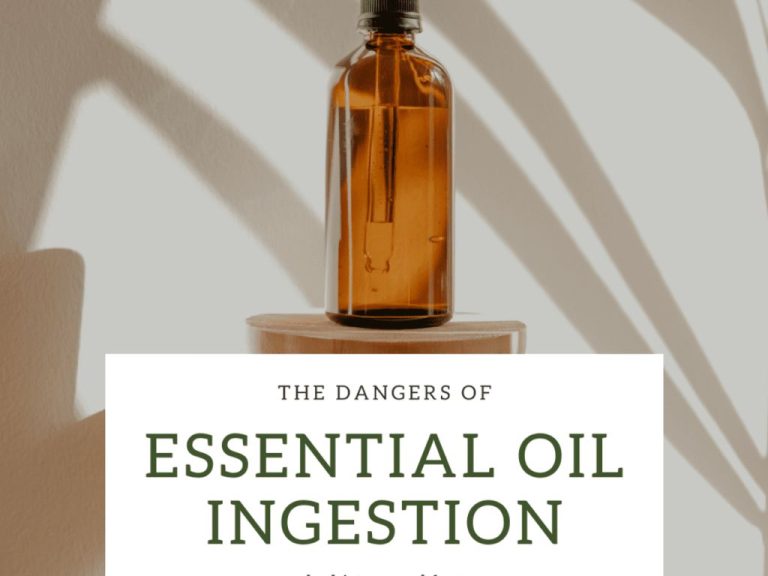Are You Allowed To Mail Candles?
Mailing candles is a common question for many crafters, small businesses, and candle enthusiasts. As candles have grown in popularity over the years, more people want to mail candles as gifts or products for their business. However, there are important regulations and safety considerations when it comes to mailing candles. The United States Postal Service (USPS) has specific rules about what types of candles can and cannot be shipped. Understanding these rules is important to mailing candles successfully and avoiding any issues or damages. This article will provide an overview of the regulations, requirements, and best practices for safely mailing candles.
USPS Regulations
The United States Postal Service (USPS) has specific regulations regarding mailing candles. According to the USPS, there are particular requirements and restrictions when it comes to sending candles through the mail.
Candles are classified as a hazardous material by the USPS because they contain flammable materials like wax and wicks. However, there are exceptions that allow some candles to be mailed domestically through the USPS system. The determining factors are the candle’s packaging, construction, and ingredients.
In general, commercially made candles that feature cotton wicks, normal candle fragrances, and non-flammable containers can be shipped by USPS. Votive, pillar, container, gel, and novelty candles usually meet the requirements. However, homemade, custom, or scented candles are often prohibited.
Types of Candles
Candles come in many forms, from wax and gel candles to oil-based candles. When mailing candles, it’s important to understand the different types and their varying risks:
Wax Candles: These are the most common candles, made from paraffin, soy, or beeswax. They generally pose a low fire hazard for shipping. However, softer wax can get damaged in transit.
Gel Candles: Made with a gel fuel, these candles are safer for shipping than wax candles since the gel is less likely to melt. The gel is also contained, reducing mess risks.
Oil Lamps: Using lamp oil instead of wax, these candles have a higher fire hazard due to the flammable liquid. Extra precautions are needed when shipping oil lamps.
Birthday Candles: Small and lightweight, birthday candles are easy to ship. But lots of these candles bundled together can increase fire risks.
Votive/Tealight Candles: These small candles pose minimal shipping hazards individually. But boxes packed tightly with votives may have higher risks.
Container Candles: Designed for melting, container candles have significant leakage and mess risks when mailing. Caution is required.
Overall, gel, wax, and votive candles tend to be safer mailing options than oil lamps or container candles, if properly packaged. Assessing the specific candle type before mailing is prudent.
Packaging Requirements
When mailing candles, proper packaging is crucial to ensure the candles arrive safely at their destination. Here are some tips for packaging candles to mail:
Use a sturdy shipping box and cushion the candles with packing paper, bubble wrap, or foam peanuts. Wrap each candle individually in bubble wrap or tissue paper so they don’t knock against each other during transit. Place the wrapped candles snugly inside the box so they don’t shift around.
Seal the shipping box well with packing tape. Make sure there are no gaps or openings where the candles could fall out. Reinforce all edges and seams with extra tape.
Write “Fragile” and “Candles” on the outside of the box so postal workers know to handle it gently. Consider also writing “This Side Up.”
Include a padded envelope with care instructions so the recipient knows how to best handle the candles when unpacking them.
Ship via a method that allows for tracking and insurance, such as USPS Priority Mail. This provides recourse if the candles are damaged or lost.
Choose expedited shipping to minimize transit time. The longer the candles are in transit, the more likely they’ll be exposed to shocks and temperature fluctuations that could affect their quality.
Avoid overpacking the box as that increases shipping costs. Use only necessary cushioning materials tailored to the specific candles being shipped.
Following proper candle packaging guidelines helps ensure your beautifully fragrant candles arrive looking and smelling as great as the day they were poured!
Alternative Shipping Options
UPS, FedEx, and DHL all have specific regulations around mailing candles. Here’s an overview of their policies:
UPS
UPS prohibits shipping candles domestically or internationally via air. Candles can only be shipped ground within the contiguous 48 states. There are exceptions for candle wicks and candles made of beeswax containing no other combustible ingredients. UPS requires ground shipped candles to have hazard warning labels indicating flammability.
FedEx
FedEx does not allow shipping candles via air, but does permit ground shipping within the U.S. Proper packaging and labeling is required, and restrictions apply for overseas shipments. FedEx classifies candle products as dangerous goods that require compliance with federal regulations.
DHL
DHL prohibits mailing candles through their international delivery services. Exceptions are made for birthday candles, tealights, votives, and other non-gel candles. Restricted candles must meet quantity limits, packaging rules, and labeling standards to ship with DHL.
International Shipping
When mailing candles internationally, there are some additional regulations and restrictions to be aware of. The specific rules can vary by destination country, so it’s important to check the postal regulations for where you will be shipping. Here are some key factors to consider:
Customs Declarations – Most international packages will require a customs form declaring the contents. Be sure to state that your package contains “candles” or “wax candles.” Failure to properly declare contents can delay delivery.
Restricted Destinations – Certain countries prohibit or restrict shipping candles and other flammable products through the mail. These include Australia, Italy, South Korea, and Taiwan. Check if your recipient’s country has any restrictions.
Quantity Limits – Some postal services put limits on how many candles can be shipped internationally at one time. For example, the United Kingdom postal service Royal Mail limits packages to 4 candles.
Extra Shipping Costs – International shipping rates are typically higher, especially for heavier packages. There may also be extra customs duties/taxes for your recipient to pay upon delivery.
Longer Transit Times – Plan for international deliveries to take longer, sometimes an extra 2-4 weeks depending on destination.
Insurance Recommended – Opting for shipping insurance can provide protection in case the candles are damaged or lost during transit.
Following these guidelines can help ensure your international candle shipments arrive safely at their destination within a reasonable timeframe.
Mailing Candle Safety
When mailing candles, it is important to keep safety in mind. There are certain fire and leakage risks to be aware of. Candles have an open flame, so proper packaging is essential to prevent fires from igniting during transit. The candle wax itself can also pose risks if not properly contained. Melted wax can leak through packaging and damage other mail items. To promote safety when mailing candles:
– Use packaging specifically designed for mailing hazardous materials like candles. Metal tins or sturdy cardboard boxes work well to contain flames and leaks. Make sure the packaging completely encloses the candle.
– Include extra cushioning like bubble wrap or peanuts around the candle. This prevents shifting and protects the candle from impacts during shipping that could cause leaking.
– Seal the packaging very well with strong tape. This minimizes oxygen reaching the candle as well as contains any leaking wax.
– Label the package to indicate there is a candle inside. Alerting postal workers allows extra precautions in handling.
– Consider mailing unscented candles. Scents can leak through packaging and the aroma could bother other mail recipients.
– Use common sense on candle type being mailed. Large, elaborate candles are higher risk than a small container candle.
With proper packaging and precautions, mailing candles can be done safely. Just be sure to put safety first to avoid fires or leaks.
Mailing Candle Kits
Candle kits come in two forms – assembled and unassembled. Assembled kits contain everything needed to make a candle, with the wax, wicks, fragrance, and vessels already combined together. Unassembled kits provide the components separately for the recipient to put together themselves.
In general, assembled candle kits cannot be mailed through USPS or other standard shipping services. The flammable wax and wick pose too much of a fire hazard. However, unassembled candle kits can be mailed as long as they follow the proper packaging and labeling requirements.
For unassembled kits, the wax, wicks, fragrance oils, and vessels must be separated and securely wrapped. Fragile components like glass vessels need sufficient padding to prevent breakage. Restrictions apply to certain hazardous ingredients, so check the specific USPS regulations.
The safest approach is to ship candle kits unassembled, with clear instructions for how the recipient can put the components together themselves. This avoids risks from flammable materials coming into contact during transit. Just ensure hazardous contents like wax and fragrance oils are declared and properly packaged.
Liability Issues
Shipping candles understandably comes with concerns over potential damage, injury, or property hazards. So who would be responsible if anything were to occur? Liability depends on each individual case.
If a candle leaks, breaks, catches fire, or causes damage during transit, the shipper may be liable if they did not properly prepare and package the candle according to regulations. Using appropriate approved packaging and following guidelines for restricted items can help limit the shipper’s liability.
The shipping carrier can also share responsibility if they mishandled a package despite proper packaging by the shipper. Common carriers must exercise reasonable care and take precautions against loss or damage. If negligence led to an issue in transit, the carrier may be partially liable for claims.
In some cases, the receiver may share liability if they did not properly handle or store a candle upon delivery. But in most instances, the shipper bears primary legal responsibility for problems caused by goods they mailed.
To limit liability risks when mailing candles, shippers should adhere to all packaging regulations, only ship allowed candle types, declare contents, and opt for signature confirmation or insurance. Consulting the shipping carrier’s specific terms can also clarify liability.
Summary
To recap, there are certain requirements and restrictions around mailing candles in the United States. The type of candle, how it is packaged, and where it is being shipped will determine if you can send it through the mail or if other shipping methods may be preferred. USPS has regulations prohibiting mailing hazardous materials including flammable liquids, gases and highly combustible solids. Most basic solid wax candles can likely be mailed if properly packaged, but liquid wax, candle wax warmers and anything with a wick may be restricted. Always check USPS guidelines, communicate with the recipient, use appropriate packaging, and consider safer shipping alternatives like UPS or FedEx when mailing candles. With proper precautions, it is possible for many candles to be safely and legally shipped. This overview covered key factors to weigh when deciding if you can mail your particular candle item.


